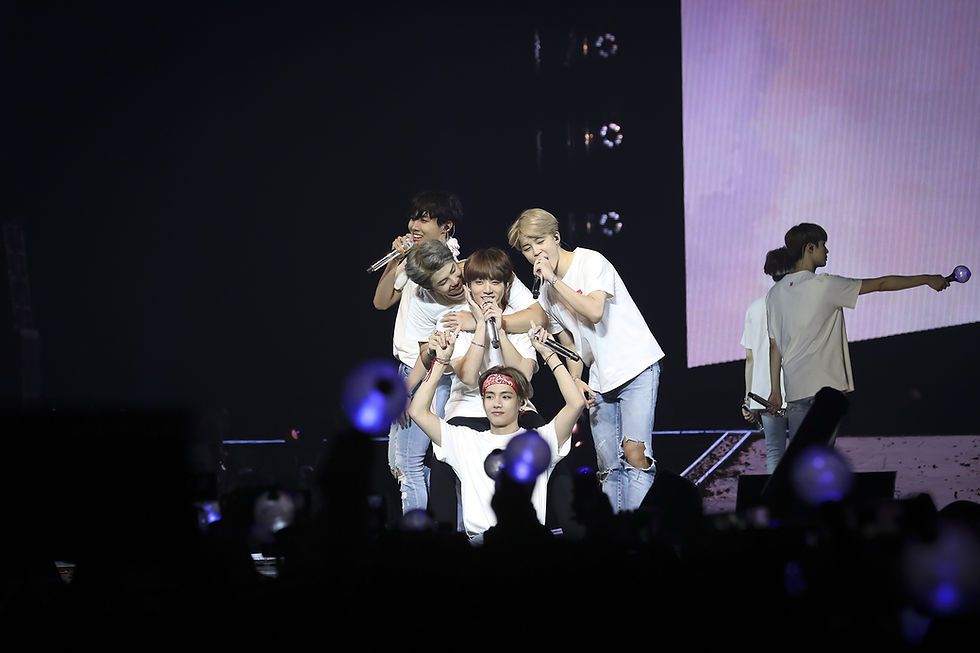How social media and the internet are breaking boundaries with men’s make up
- Caitlin Jordan
- Dec 18, 2017
- 4 min read
Updated: Dec 21, 2019

Image via Instagram @zaakiromar
Zaakir Omar is a lifestyle blogger and fashion designer from South Africa. He started wearing make-up because he was fascinated by women and their beauty and how make-up contributed to it. Growing up, he would watch them put on make-up, do their hair and was in awe of how make-up would make them look and feel. He started experimenting and his fascination grew from there, soon becoming his passion and a way of life.
However, despite finding comfort in cosmetics, Zaakir faced bullying from peers at school and even some family members as they misunderstood his newfound passion. He was often asked if he wanted to be a girl or if he was transgender.
Due to tradition and close-mindedness, there is a stigma around men using the advantages of cosmetics like women do. Some users view their artistry to be a clear celebration of makeup, but even then, it can provide subtle enhancements and boost confidence.
According to GlobalData’s 2016 primary consumer research, 25% of European males would be willing to increase the number of products they use in their beauty and grooming routines to improve their appearance.
This summer, fashion company ASOS launched its first ever male-targeted make-up range, saying it was seeing growing numbers of men "dabbling" with concealers and foundation. The line that ASOS stocked was from MMUK MAN, a brand that launched in 2011 with a collection of 12 products specifically for men. Today the company offers more than 40 products, ranging from foundations, concealers and bronzers, to eye makeup products such as guyliner, “manscara” and even brow gel.

Image via Gay Times
With their rise in popularity, the brand is ready to make UK retail history. They announced plans to open the first brick-and-mortar make-up store for men in the country. The shop is set to open in Brighton as early as next year.
The growth of social acceptance towards men wearing makeup has also been significant since the turn of the century. Celebrities such as Russell Brand and David Beckham have confessed to wearing make-up to enhance their physical features. Since then, the internet and the rise of social media has also inspired gents to become more conscious of their appearance.
Zaakir decided to post his looks on social media because he’s proud of them. “Being a male MUA (make-up artist) and wearing make-up in a female dominated industry I was never fully secure with my technique, but I knew that make-up was my passion and that I want to share it with the world. I was also proud of how far I had come and the looks I can create, so I started posting my make-up looks on social media.”
The initial response was positive, and he received love and support from people who sent him messages telling him how much he inspired them.
“Social media has become such a great platform for expression and opinion and the more that men post using cosmetics, the more it normalises it and people are sort of forced to accept it. If you look at the likes of Jeffree Star and Manny MUA and the positive impact they have on the beauty industry and how well their opinions are received, it proves that social media has impacted how people perceive men who use cosmetics,” said Zaakir.
Other highly popular male make-up bloggers include Patrick Starrr and James Charles who have amassed millions of followers on social platforms such as YouTube and Instagram, where they give make-up tutorials and advertise products.
The New York Times reported that the Instagram data team had found a 20 per cent increase since the start of the year in mentions of “makeup” by male accounts on the platform.
Marcos Saravia, a male make-up artist for Lancôme posts his looks on Instagram to show them off and gained followers who were interested in finding out what products he used.
“I definitely do think social media is impacting how men who wear makeup are being perceived, it’s definitely becoming a normal thing for men to be seen with make-up, as it should be. Social media is giving us a platform to share our artistry” he said.
In his three years of working in the beauty industry, Marcos has only ever had two male make-up clients. “Most of the times it’s because men are either afraid of public perception or because they are not open.”
According to Cosmopolitan, Sleek ran a survey with anti-bullying charity Ditch The Label and found that 23% of people think it's weird for a man to wear make-up.
However, traditional gender norms are being broken down and challenged in ways unprecedented in categories traditionally viewed as “feminine”, highlighting key innovation opportunities for beauty manufacturers worldwide.
MMUK MAN takes pride in their masculinity and the production of makeup that truly meets a gentlemen’s needs. There has also been talk of Rihanna’s Fenty Beauty line creating a men’s collection.
Image via Coveteur
“I've always believed that makeup is genderless, so I don't think that the distinction between men's and women's makeup is needed. However, I do believe that brands need more makeup campaigns and marketing directed to men who use cosmetics” said Zaakir.
Though becoming more socially accepted, male beauty products are still largely unavailable in traditional High Street retailers, making it difficult for male make-up products to reach a wider audience. Furthermore, make-up is marketed to girls as they grow up, not boys, and it will take a new approach from brands and retailers to change that. These are just some of the extra steps that could further normalise cosmetic use for men.








Comments